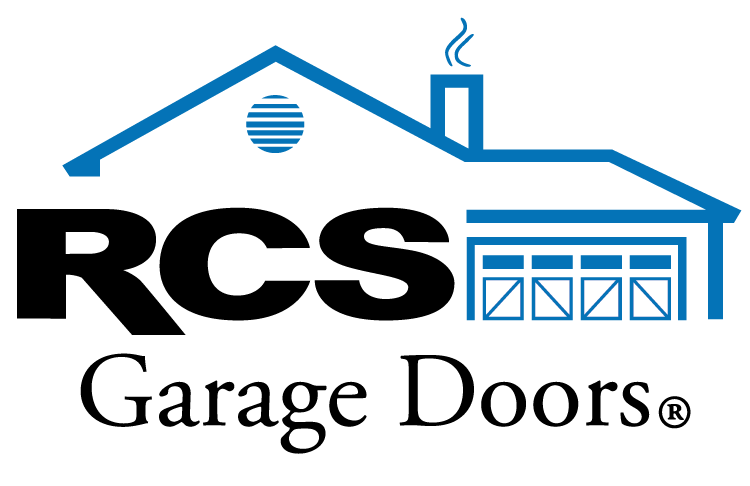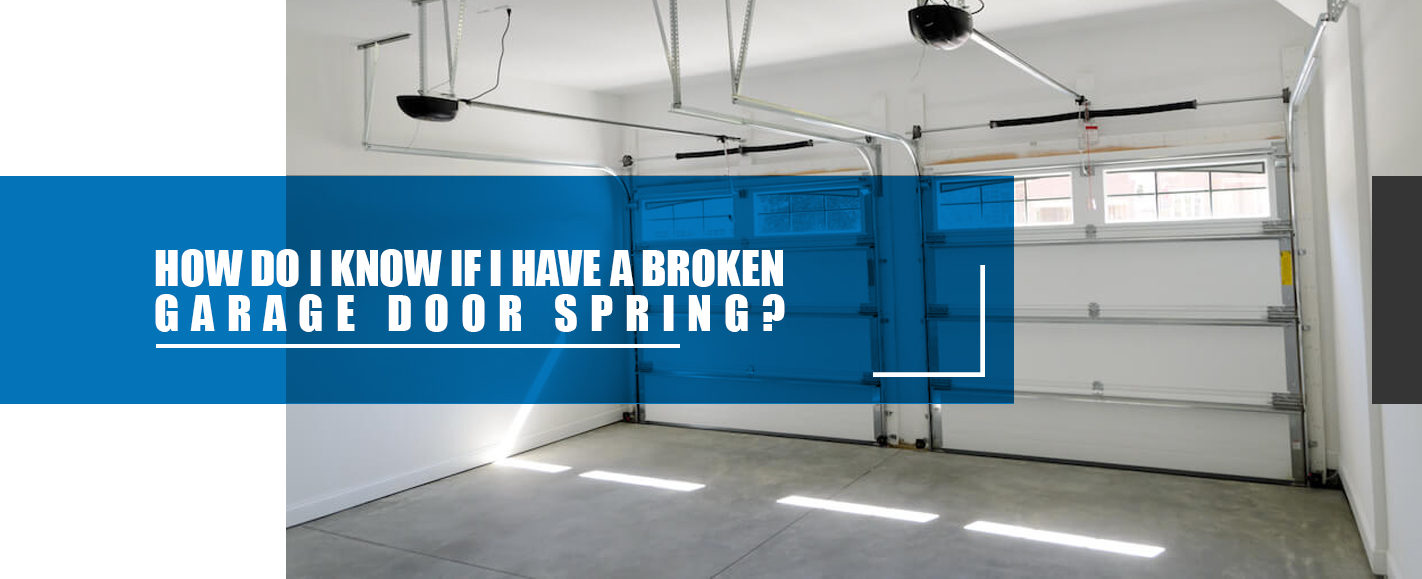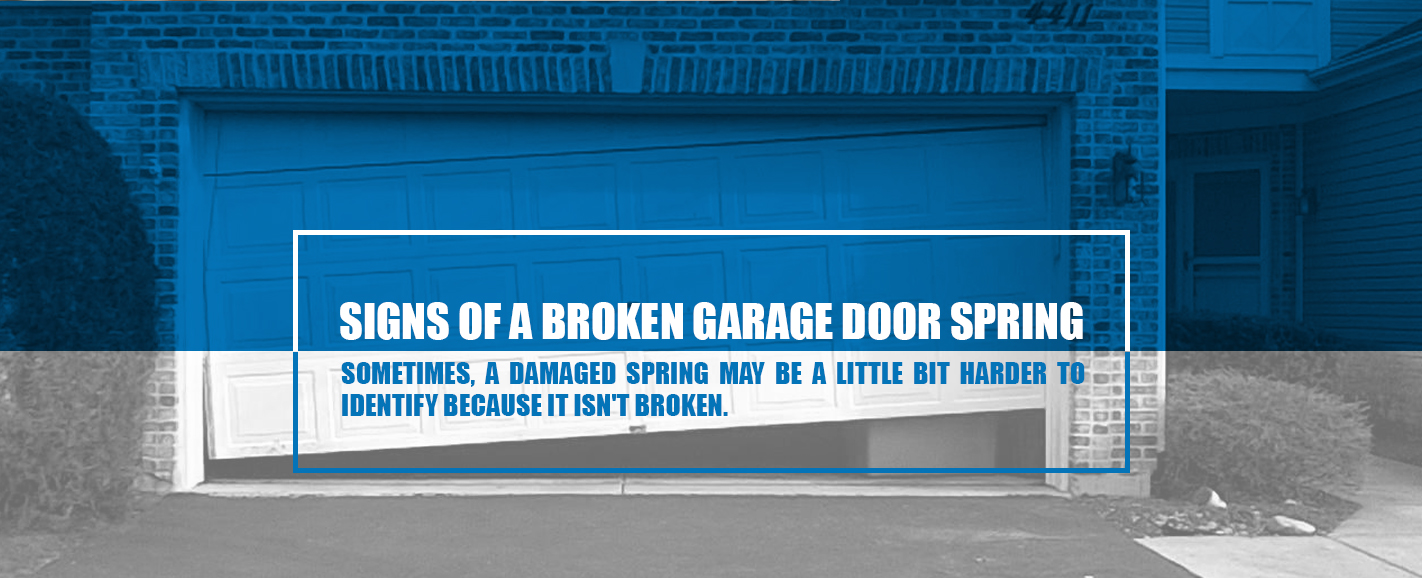How Do I know if I Have a Broken Garage Door Spring?
Table of Contents:
- What Is a Garage Door Spring?
- Signs of a Damaged Garage Door Spring
- Signs of a Broken Garage Door Spring
- How to Open and Close a Garage Door With a Broken Spring
- Get Help From Experts
If you’re like most people, your garage door gets more use than your front door. It’s the primary entry and exit point of your home, which means your garage door is going up and down several times a day, an action you typically take for granted as you push a button on your way in or out.
Then, one morning, your garage door doesn’t open. Suddenly, it’s not as simple as pushing a button and backing your car out. Now, you have a problem, and you need to find a solution.
While there could be several reasons for a malfunctioning garage door, one of the most likely explanations is that your door has a broken torsion spring.
Garage Door Spring Repair Services
What’s that, you ask? And what am I supposed to do about it?
Don’t worry. Most homeowners don’t know much about the mechanics of their garage door, and that’s OK. In fact, in 2014, the U.S. Consumer Products Safety Commission reported an estimated 18,000 garage door-related injuries. To avoid being included in this statistic, it’s better to leave garage door repair to professional repair companies, which means homeowners don’t need to be experts about their garage door.
However, if you own a home with a garage, it’s essential to understand the mechanics of your door, so you can easily identify a problem. By doing this, you’ll have an easier time figuring out whom to call, and you’ll have your door operating back at its full capacity even sooner.
What Is a Garage Door Spring?
You’ll find the garage door’s spring along the top of the door inside your garage. It’s substantial and very evident. It connects to cables that wind up when you activate the garage door opener — where these cables are and how they operate depends on what kind of automatic opening system you have. This spring is essential to the functioning of your garage door. As the cables turn, the tension increases on the spring, pulling the door up. If it becomes broken or damaged in some way, it won’t operate properly, resulting in a door that doesn’t open correctly — or open at all.
Springs on a garage door should be durable. In fact, on average, they should last through 10,000 cycles of opening and closing your garage door. However, just like anything else, over time they can wear out or become damaged in some way. Ideally, homeowners should have a professional garage door repair service come out to service the springs on their garage door. This service doesn’t need to happen that often, but as your door starts to age, it’s crucial to take notice of how it’s operating and have it properly maintained.
The good news is, out of anything on a garage door, the springs are the most likely part to break, which can make it simple to diagnose when problems arise. The bad news is, a broken torsion spring on a garage door can turn into a safety hazard. So, if you discover your door isn’t opening as it should, the first thing you’ll want to check is the condition of your spring — especially if your door is getting older and you haven’t had it serviced recently.
Signs of a Damaged Garage Door Spring
If your door isn’t opening correctly, spend a few minutes inspecting it to see if you can figure out the problem. Sometimes, your spring may be damaged or worn out, but it won’t be broken. Other times, there will be a distinct break. Either way, it doesn’t take a rocket scientist to discover a problem with your garage door spring. If you’re having trouble with your garage door, check out our article on common issues with garage door operation. Typically, there are two ways to identify damaged or worn-out springs:
1. Balance Issues – Garage Door Falls Down
If you have a hard time closing and opening your door — but it does still move — your door may be out of balance. You can also identify this problem if your door falls quickly after it lifts several inches, or by the door moving up and down on the track more slowly than usual. Whether it becomes faster or slower may depend on what has caused it to become unbalanced. Another telltale sign of balance issues is excessive noise as you raise it up and down.
Issues with garage door balance don’t always result from a problem with the spring, but they can aggravate an existing problem or create one if you continue to operate the door despite balance problems. Eventually, if you don’t address suspected balance issues, they can put extra strain on the spring and cause it to break or become damaged.
2. Excessive Squeaking
Over time, your springs can become worn and start squeaking. While all garage doors make some noises now and then, if you notice loud noises that haven’t been present in the past, it may be a sign that there’s a problem. Applying some lubricant to them can sometimes take care of the problem, but if you do this and there are still noises, it might be indicative of a more significant issue.
Adjusting a Garage Door Spring
Symptoms and Signs of a Broken Garage Door Spring
Sometimes, a damaged spring may be a little bit harder to identify because it isn’t broken. In those cases, it takes some exploration to find the problem. That’s not usually the case with a broken spring. Trust us — if your spring breaks, you will know it. When a garage door torsion spring snapped, it will make an extremely loud, distinct bang — akin to the sound of a gunshot — because of the tension and pressure that build up in the spring. Because the torsion spring spirals around a shaft, you’ll also hear the sound of the springs as they move around that shaft. The noises are loud and distinct, and you’ll immediately be able to look up and see the break above your garage door.
If you weren’t in the garage when a spring broke, it might take some looking around to identify the problem. Here’s how to know if your garage door spring is broken. First, check to see if the spring is visibly intact. If there is an obvious break, you have your answer. However, sometimes the break won’t be clean, or the problem will be that the spring stretched out instead of snapping.
While looking at the spring itself can yield the most obvious answer, the garage door will also give some clues about the state of your spring. Take some time to look at the door to see if:
- The top half of the door appears misaligned
- The door opens a few inches and then slams down again
- The cables attached to the springs are dangling
- The door seems to be off-track or crooked
Any of these can be signs that your spring is damaged or broken. Later, we’ll emphasize the importance of calling a reputable garage door repair company to repair and replace a broken spring. But, being able to identify the source of your problem can save you — and your repair tech — a lot of time and energy, which means you can get your garage door repaired and operating smoothly again in less time! If you’re interested in improving your garage’s functionality even further, consider our garage door screen systems for added convenience and protection.
The way a door opens or closes can provide clues that a garage door spring is broken or damaged. While many people find they cannot operate their door when the spring gets damaged or broken, sometimes people can still get their door to move. If you are able to safely move your door without doing further damage to it, your door’s movements can be helpful in identifying your problem. In general, you should look for these common signs that your garage door spring has snapped.
- The garage door jerks as it goes up and down.
- The door is crooked as it moves along the track and may become stuck in progress.
- The door won’t open, even when you activate the emergency release.
- The door falls rapidly when you put it down.
- The top of your garage door became bent when you tried to use the opener.
- There is a gap between the rings in your torsion spring.
- The door opens a few inches, then the safety mechanism stops it.
- The door goes up more slowly than usual.
- You override the electronic opener and the door is extremely heavy when you try to open it manually.
How to Open and Close a Garage Door With a Broken Spring
When your door still appears to be functioning — even partially — it can be tempting to ignore the problem. However, you should never ignore the signs of a broken garage door spring. Even if the door can still open and close enough for you to get your car out, allowing this problem to persist will result in further damage to your garage door and your garage door opener. If the damage is extensive, you may end up having to replace your garage door and opener, which is a much more expensive proposition than replacing a spring.
However, once you’ve identified the signs your spring is broken or damaged, you may have to wait for a little bit until a professional garage door repair company can make it out to your house. During that time, you may need to open and close your garage door. If you do, follow these tips to keep your family safe and prevent further damage:
- If the door is in the open position, DO NOT use the manual override to disconnect it from the opener unless you have several strong, able helpers to catch the door and guide it safely down the track. If you detach the opener without help, this could cause your door to come crashing down, potentially damaging the door or, even worse, hurting you or another family member if they are in the way.
- If the door is already open and you cannot close it safely, place something along either side of the track to “catch” it if the door falls while it is up. Choose something sturdy that can take the weight of your door. Remember, when you don’t have the use of your automatic opener, your door’s full weight is not spread out between the spring and the cables. It is all in the door itself. Make sure everyone in your household is aware of the problem, as well as the potential dangers, and ask them to stay away from the door until help arrives.
- If your garage door is closed when you find a broken or damaged spring, it’s best to keep it closed until a qualified garage door repair professional can arrive to evaluate the damage. If your car is inside the garage and you cannot wait for a repair person, never attempt to override the automatic opener unless you have several strong helpers to lift the door and keep it from falling on you or your car.
The bottom line is this: It’s essential to be able to diagnose a problem with your garage door. It can be helpful to you in figuring out the steps you need to take to address the problem and finding a reputable garage door repair company to come out to fix the problem. However, the safest thing you can do for yourself and your loved ones is to secure the door as well as you can, then call for professional repairs.
Leave Repair and Replacement to the Pros
If you searched online, you’d likely come across several websites claiming they can instruct you in how to repair or replace your garage door spring. And, if you’re like most homeowners, it can be tempting to save a few dollars and turn this into a DIY project. But, with the statistics out there about garage door-related injuries, it’s just not worth the risk to you or your family. Why?
1. It’s dangerous.
Your garage door is heavy. When the spring isn’t working, it can’t take the weight of the door. If the door comes crashing down, it can hurt someone in its path.
2. It’s difficult to get it right.
Because a broken or malfunctioning spring is a safety hazard, there’s no room for error. If you don’t install it right, someone could get hurt, or you could end up damaging your garage door. Saving money is never worth the risk of hurting yourself or someone you love. If you suspect you have a damaged or broken garage spring, it’s time to call the experts.
Request Garage Door Service Today
Providing quality service and repair in the Charlotte, N.C. area, RCS Carolinas is home to a team of experienced, well-trained professionals who are ready and able to diagnose problems with garage doors of all kinds — both residential and commercial.
While we are confident we can repair your garage door and have it working like new, if you decide it’s time to replace your existing one, RCS Carolinas can help with that, too. Offering a variety of Clopay garage doors, our showroom has many great options if you’re in the market for a well-designed, high-quality garage door.
Let us get your garage door working again. Give RCS a call and schedule your service visit today!


 Register My Door
Register My Door




